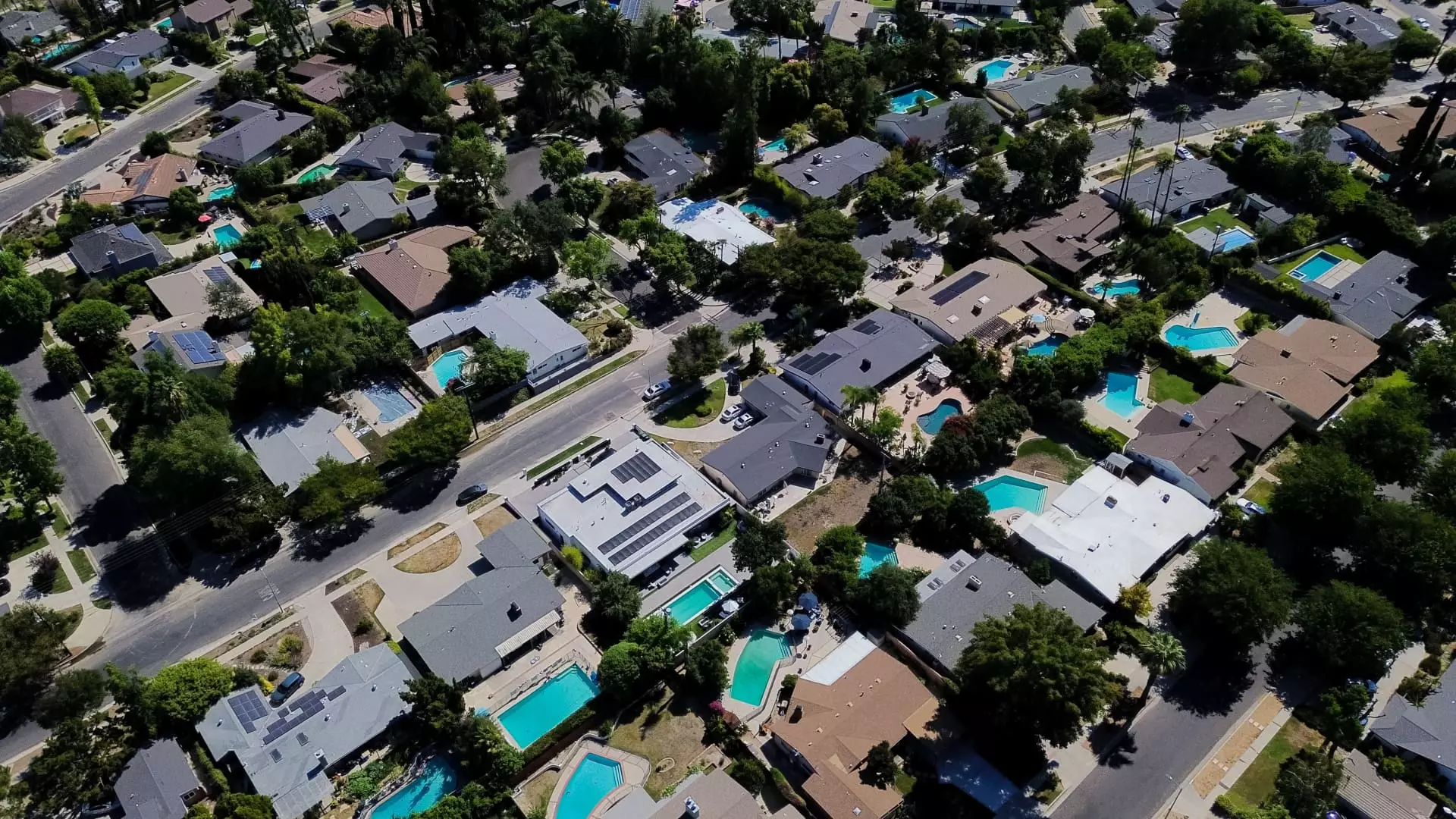Despite the headlines touting a resilient housing market, the reality paints a more troubling picture. June’s sales of existing homes plummeted by 2.7%, significantly surpassing the expected decline of merely 0.7%. This stark divergence exposes the fragility of the current housing landscape, which continues to operate under the weight of an artificially inflated market. The unchanged year-over-year sales figure indicates a stagnation that is masked by surface-level optimism, but beneath that veneer lies a deeper crisis—one rooted in economic policies that have kept mortgage rates stubbornly high. When the average 30-year fixed mortgage hovers around 6.77%, it becomes an insurmountable barrier for many potential buyers. This is no coincidence but a consequence of deliberate monetary policy choices that prioritize inflation control at the expense of affordability. Consequently, prospective homeowners are increasingly sidelined, and the dream of homeownership remains elusive for younger Americans.
The Looming Supply-Demand Disparity and Affordability Crisis
The housing market’s supply dynamics further complicate this picture. Inventory levels increased by nearly 16% year-over-year, reaching 1.53 million units available for sale. However, this doesn’t translate into a market teeming with options; rather, it underscores decades of underinvestment and underbuilding that have created a significant shortage. The current supply equates to a mere 4.7 months at the present rate of sales, well below the balanced market benchmark of six months. This persistent undersupply gives rise to soaring prices—home prices increased by 2% from last year and set record highs for June, averaging over $435,000. Such figures underscore a market driven by scarcity and speculative buying rather than genuine affordability or sustainable growth. With prices rising faster than wages and construction lagging behind population growth, the future hints at a widening chasm—one where first-time buyers are increasingly priced out, and homeownership remains an exclusive club.
The Disproportionate and Unsustainable Market Segments
Market performance isn’t uniform across all price points. The decline in homes under $100,000 by 5% signals a shrinking affordable tier, leaving low-income buyers even more marginalized. Conversely, properties priced above $1 million surged by 14%, revealing a bifurcated market that favors high-net-worth individuals and institutional investors. This segment’s rapid movement is symptomatic of a broader real estate bubble, fueled not by organic demand but by speculation and cash purchases—29% of transactions now involve all-cash deals, a figure that has surged well beyond pre-pandemic norms. Such trends distort market signals, inflate prices further, and drown out genuine buyer activity. The average home now spends over two weeks longer on market, and high-end homes tend to sell faster, revealing a skewed marketplace where wealth and access dictate success rather than affordability.
The Role of Policy and Economic Uncertainty
The overarching narrative is that policies aimed at tackling inflation—namely consistently high mortgage rates—have inadvertently strangled the housing market. By intentionally keeping borrowing costs elevated, policymakers have suppressed real estate activity, particularly among first-time buyers. Meanwhile, the broader economic climate, filled with uncertainties, deceptive stability, and inflationary pressures, has fostered a cautious environment that discourages risk-taking. The result is a market caught in a cycle of high prices, limited supply, and subdued demand, especially among ordinary households. The wealth accumulation witnessed among current homeowners—who have seen their net worth grow by nearly $141,000 over five years—is a testament not to market health but to a skewed distribution of opportunity favoring the privileged few.
This environment challenges the very foundation of a fair housing market and calls for critical reassessment of policies that both indirectly and directly contribute to its distortion. For those on the outside looking in, the message is clear: the American dream of homeownership is being systematically skewed in favor of the wealthy, with governmental policies serving as unwitting architects of this imbalanced landscape rather than safeguards of opportunity and fairness.


Leave a Reply